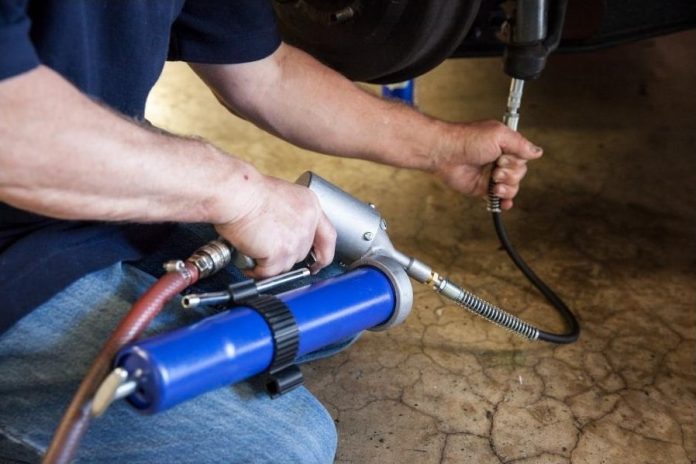The grease gun is one of the most common tools you’ll see in your shop or manufacturing plant. It’s likely something you use regularly without much thought but it’s important to know its inner-workings, its various applications and components and the general best practices for using a Grease pump.
For example, most maintenance departments use multiple types of grease guns, which can lead to cross-contamination and an incorrect output measurement. We’ll discuss how output is measured to make sure your grease output is correct.
We’ll also breakdown the grease gun to uncover all of its component characteristics and look at other related topics like common grease gun disorders, symptoms of incorrect greasing volume or frequency and outline some best practices for using a grease gun.
Types of Grease Guns
Grease guns have three ways in which they can be powered: by hand, air or electricity. Aside from these variations, the hand-powered (or manual) grease guns can either be manufactured with a lever or a pistol grip. The benefits to each of these depend primarily on the intended application and the lubrication technician’s personal preference. One other major variation to the grease gun is how the grease is to be loaded: by suction fill, cartridge or bulk.
Manual (Lever) – This is the most common type of grease gun and can supply around 1.28 grams of grease per pump, which is forced through an aperture from hand pumps.
Manual (Pistol Grip) – This variation of the lever-type grease gun allows for the one-handed pumping method, which is very common. It provides approximately 0.86 grams per pump.
Pneumatic (Pistol Grip) – This grease gun uses compressed air directed into the gun by a hose activating a positive displacement with each trigger.
Battery (Pistol Grip) – This is a low-voltage, battery-powered grease gun that works comparably to the pneumatic grease gun. It offers the advantage of being cordless.
It’s fundamental that grease is used as a lubricant because it clings to a machine’s moving surfaces without easily leaking away like oil. For this reason, the filling and refilling of grease in grease-lubricated machines must be treated differently than that of oil-lubricated machines. Therefore, it is essential that the proper grease gun operation is understood and managed by lubrication technicians for bearing and machine reliability. Simply knowing the signs of overgreasing and undergreasing and how often to reapply can go a long way in extending machinery life.
Connectors, Adapters and Couplers
A grease gun may come with the standard connection adapter such as a hydraulic coupler, but there are several variations depending on the application. The standard hydraulic coupler is the most commonly used and most applicable. A 90-degree adapter is ideal for fittings in confined areas that require a 90-degree bend. A needle-end adapter provides a thin, precise amount of grease for tight places, while a three-jaw swivel coupler offers a variety of locking positions for different applications.
Flexible Hose vs. Fixed Tube
The decision to use a flexible hose or a fixed tube depends on the machine’s grease-fitting type and ease of location, as well as the type of grease gun used. For example, a hard-to-reach location would benefit from a flexible tube. On the other hand, lever-style grease guns require both hands to pump the grease and would favor the fixed-tube alternative.

